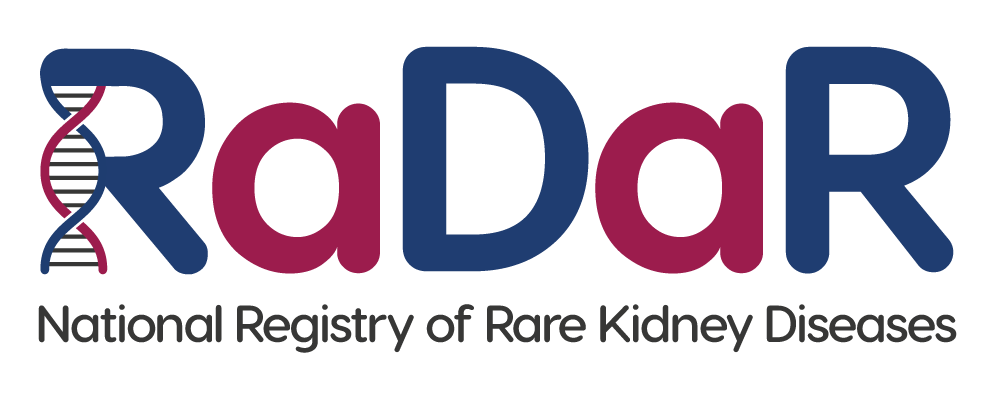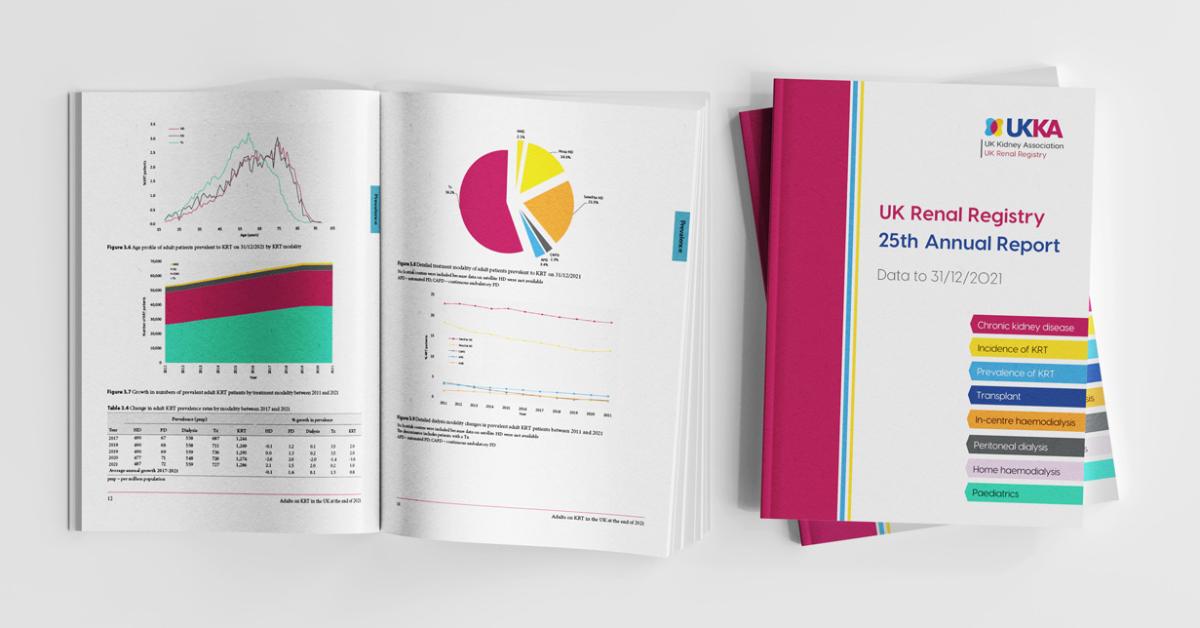Clinician Information
The classical name given was ‘Familial Juvenile Hyperuricaemic Nephropathy’ (FJHN). Other terms / entities which overlap phenotypically, include:
- Familial gouty nephropathy
- Autosomal dominant interstitial kidney disease
- Medullary cystic kidney disease
- Glomerulocystic disease
To date three distinct genetic mutations have been identified, linked to this spectrum. The first and most common gene mutation discovered was in the Uromodulin (Umod) gene, located in chromosome 16. To confuse the issue, the same mutation has been found in a condition previously described as ‘Medullary Cystic Kidney Disease (MCKD) type II’. The two conditions are almost identical in clinical terms, with the latter being distinguished by the presence of tiny cysts in the corticomedullary junction. These are completely different to other forms of cystic kidney diseases, and notably the kidneys are not enlarged, in contrast to the better-known polycystic kidney disease. Some cases labelled glomerulocystic disease also have a Umod mutation.
Other mutations have been discovered in the genes encoding:
- Hepatocyte Nuclear Factor 1 beta (HNF1b), which typically has diabetes and renal cysts, with or without gout. This condition is covered by a separate Rare Disease Group.
- Renin (Ren) in families displaying the same clinical features as UAN, often with childhood aneamia.
- MCKD type I, which is clinically indistinguishable from MCKD type II, has been shown to be related to a mutation in the Mucin-1 (MUC-1). Genetic testing for this mutation is technically challenging
- SEC61A1 mutations are a recently discovered cause of ADTIKD and like REN mutation families, affected patients had congenital / childhood anaemia
A recent consensus conference has gone some way towards rationalising the group of syndromes by coining an all-inclusive term ‘Autosomal dominant tubulointerstitial kidney disease’ (ADTKD). We anticipate that with the passage of time more and more gene mutations will be identified from this cohort.
The autosomal dominant pattern of inheritance is striking. This means that roughly half the children of an affected individual will develop the disease in their lifetime. Both genders are affected equally. The features described relate in the main to Umod mutations as they are by far the most frequent.
Typically the affected subject develops insidious renal failure, and often presents in advanced stages, when the underlying diagnosis is not obvious and difficult to establish. These patients often end up with a diagnostic coding of ‘Unknown’, or possibly even misdiagnosed empirically – typically labeled ‘Hypertensive renal failure’, which is a comfortable and non-controversial dumping ground!
The age at diagnosis is usually between 30 and 60, and almost all affected individuals will go on to develop renal failure. Rarely the disease may present earlier, between the ages of 15 and 30.
A high proportion of patients (40-50%) will have developed gout at a relatively young age. This is an important clue to the diagnosis. Hypertension is not prominent in the early stages, in contrast to most other forms of progressive renal disease. The urine on dipstix and microscopy is typically unremarkable.
Less common symptoms related to the less frequent mutations include unexplained anaemia, polyuria (passing large volumes of urine), hyperkalaemia and hypotension (low blood pressure).
Imaging of the kidneys may reveal small cysts at the corticomedullary junction (MCKD). The kidneys are not enlarged, and late presenters will have small kidneys, which is a nonspecific feature of advanced kidney failure. A kidney biopsy usually reveals chronic tubulointerstitial inflammation and fibrosis, out of proportion to the degree of renal impairment. Late presenters will show nonspecific changes of endstage renal failure.
Any patient with the characteristic family history, without a definite diagnosis (such as polycystic disease) should be suspected as a candidate for this diagnosis and investigated accordingly.
- Autosomal dominant transmission with history of end-stage kidney disease
- Early onset gout / hyperuricaemia, also with a strong family history
- Tubulo-interstitial nephritis on biopsy
- Bland urinary sediment
- Small medullary cysts on renal ultrasound (not the large cysts of polycystic disease)
Samples of urine and blood should be sent for analysis as soon as the diagnosis is suspected, preferably early in the course of the disease. The following should be tested routinely:
- Enhanced renal profile (urea, creatinine, sodium, potassium, calcium, phosphate, bicarbonate, albumin, uric acid)
- Full blood counts
- Urine uric acid, protein, creatinine
Establishing the Diagnosis
- Hyperuricaemia and a reduction in the fractional excretion of urate are strongly suggestive features.
- A marked reduction in urinary uromodulin excretion is one of the hallmarks.
- Genetic analysis may show abnormal mutations in certain specific genes – many more are likely to be discovered in the foreseeable future. Umod gene test is now easily available, but the other genes can only be tested in a few research laboratories.
If a close relative carries the confirmed diagnosis, then the occurrence of renal failure can be reasonably assumed to be due to the same cause (provided the clinical presentation is similar). DNA/ blood samples can be sent to Cambridge, which offers a UKGTN-approved Umod and Ren (2 gene panel) screening service. Alternatively, a 22 gene panel which includes UMOD, HNF1B and MUC1 as well as other genes associated with cystic kidney disease, may be used via London North East Regional Genetics Laboratory Service at Great Ormond Street Hospital




